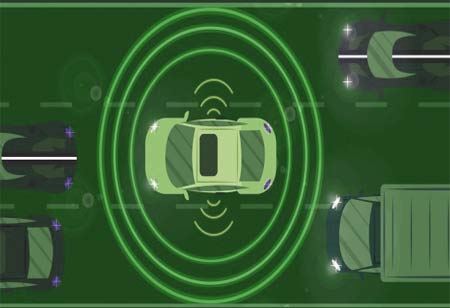

Thank you for Subscribing to Auto Business Outlook Weekly Brief

Golfers can benefit from digital scorecards, course maps, and direct communication with the clubhouse via built-in touchscreen displays and mobile apps.
Golf electric vehicles (EVs) have come far from their simple, practical beginnings. Technological advancements are revolutionizing these vehicles' design, functionality, and sustainability, making them more efficient, comfortable, and environmentally friendly. From cutting-edge battery technology to smart connectivity features, the latest innovations in golf EVs are setting new standards for the industry. The most significant advancement in golf EVs is the development of more efficient and powerful battery systems. Lithium-ion batteries, which offer higher energy density and longer lifespans than lead-acid batteries, have become the standard in modern golf EVs. The batteries extend the range of the vehicles but also reduce the overall weight, improving performance and handling. Some manufacturers are even exploring solid-state batteries, which promise greater energy storage capacity, faster charging times, and enhanced safety features. Another innovative trend is incorporating solar panels into golf EV designs. Typically mounted on the roof, these panels harness solar energy to supplement the power supply, extending the vehicle’s range and reducing reliance on grid electricity. The technology is particularly advantageous for golf courses in sunny regions, as it allows continuous daily charging. Solar power integration promotes sustainability and offers long-term cost savings by decreasing the frequency of battery recharges from conventional power sources. Integrating smart connectivity and Internet of Things (IoT) technology transforms golf EVs into intelligent vehicles. Modern golf EVs now come equipped with GPS systems, real-time tracking, and geofencing capabilities, allowing for better course management and enhanced player experiences. For instance, fleet managers can monitor the location and status of each vehicle, optimizing their deployment and maintenance schedules. Autonomous driving technology is beginning to enter the golf EV market. Some manufacturers are experimenting with self-driving golf carts that can navigate the course, transport players, and avoid obstacles without human intervention. Autonomous vehicles use advanced sensors, cameras, and artificial intelligence to understand their surroundings and make real-time decisions. While fully autonomous golf EVs are still in the early stages of development, their potential to enhance convenience and safety on the golf course is immense. Comfort and customization are key focus areas for the latest golf EV models. The enhancements improve the user experience and help golf courses differentiate by offering unique and premium transportation solutions. Manufacturers increasingly use eco-friendly materials and sustainable manufacturing practices to reduce their environmental footprint. Some companies are adopting circular economy principles, designing more accessible vehicles that can be disassembled and recycled at the end of their lifecycle. The efforts reduce the environmental impact of golf EV production and promote a more sustainable industry. Safety remains a paramount concern for golf EV manufacturers. The latest models have various safety features, such as advanced braking systems, collision avoidance technology, and improved lighting for low-visibility conditions. Some golf EVs include seat belts, rollover protection, and speed control mechanisms to enhance passenger safety. The future of golf EVs looks incredibly promising, offering exciting new possibilities for golf courses and players alike.I agree We use cookies on this website to enhance your user experience. By clicking any link on this page you are giving your consent for us to set cookies. More info